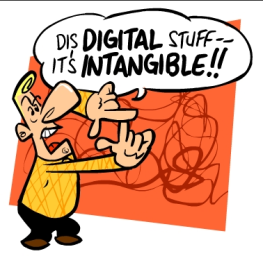South Africa is leading the way on the usage and adoption of the integrated reporting approach. Ernst & Young encourage this through a bench marking of the listed companies, presently in its forth year.
In the recent report "EY’s Excellence in Integrated Reporting Awards 2014" it does make for interesting reading on where the use of all the combined capitals are encouraged but still shows that progress seems to be significantly lacking.
The stated purpose of the report.
The purpose of the survey is to encourage excellence in the quality of integrated reporting to investors and other stakeholders in South Africa’s listed company sector.
EY encourages the use of a bench marking process to give entities the opportunity to obtain independent input about the quality of their integrated report.
The integrated reports are reviewed using guidelines from the Excellence in Integrated Reporting survey and a bench marking report is issued. The bench marking reports contain practical suggestions and comments that can be used by the company to improve the quality of future reporting.
A link to the report is here.
The articulating and reporting of the combined capitals is really disappointing.
I wanted to pick up on this by showing the continued disappointing result from trying to articulate the combined capitals. A situation that seems to indicate companies are still struggling to understand and capture the values of their capitals even after four years of running this bench marking and award system. Something is clearly lacking.

The Adjudicators comment falls short of offering the help needed in reducing this glaring error in this integrated capital reporting and it seem is only continuing to place encouragement on the emphasis on this but offer little practical advice of setting about this. It seems clearly that companies clearly struggle on articulating the make up of all their combined capitals.
To quote:
"We believe that an explanation of how a business creates value with respect to the six capitals is a particularly suitable way for most companies to present much of the content that needs to be shown within its integrated report.
An explanation of how value is created within an organization can sensibly be structured around how value is embodied in the capitals that it uses."
The integrated report is ideally meant to be a demonstration of integrated thinking.
Is there any evidence of this?
To quote: "We would imagine that this is happening, but there is little or no clear evidence of this in the reports. It is clear to us that demonstrating integrated thinking, and therefore producing an integrated report will be difficult if the management are not thinking in an integrated way"
It does seem, in my review of this report, the lack of underpinning the need of integrated thinking is still lacking a real clarity of how to understand, measure and articulate the combined capitals.
Surely a real opportunity for those in the practice of offering training and solutions to overcome this lack of clarity? Perhaps it is about time the South African business community reached out?

